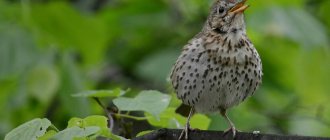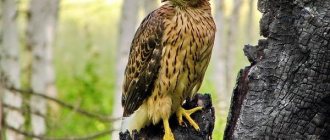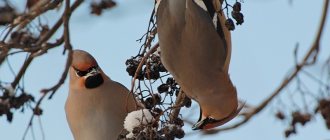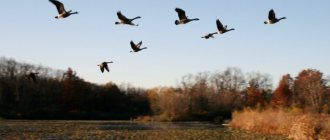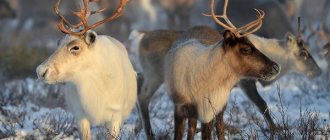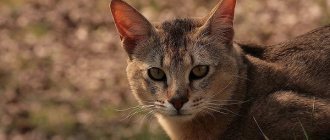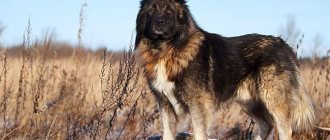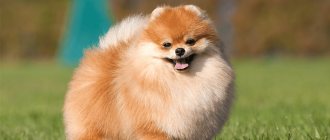There are more than ten thousand bird species in the world, a tenth of which live in Russia. Wintering birds remain in their native lands, while migratory birds change their habitat depending on the time of year. With the advent of cold weather, the food supply is reduced, so birds fly to regions with warm winters and accessible food. Among insectivorous species, there are more migratory birds than among granivorous species. In the spring they return to their homes to raise their chicks. Bird migration can occur over both short and long distances.
Wood Accentor
It is confused with the forest pipit, warbler, and warbler. The Accentor is one of those birds that only ornithologists know, although it is common in forests. Hunters come across birds along with goldfinches and buntings.
The bird's appearance is inconspicuous. The plumage is brown-gray. The size is small. The body weight of the Accentor does not exceed 25 grams. Many people confuse a bird with a sparrow. There is a deal of truth in it. Accentor belongs to the order Passeriformes.
The Accentor feeds on insects. This prompts the bird to fly south. However, the bird stays until the coldest weather and returns early in the spring. True, this backfires on the Accentor. Having arrived, the bird immediately lays eggs. There is no vegetation yet. It is impossible to hide the masonry. The eggs are eaten by predators. Chicks hatch only from the second clutch.
The Accentor's tolerance to cold is reinforced by its ability to change its protein diet to a plant-based diet. Instead of insects, the bird can eat berries and seeds. Therefore, in regions with a temperate climate, dunnocks do not fly away at all. Birds from the northern regions of the country are flocking to the south.
Few people know the Accentor, it is very similar to a sparrow, and is often confused with a more familiar bird
Rooks
The early arrival of these birds is associated with the approaching spring, but they also fly from different places. The main wintering regions of rooks are located close to the nesting sites. Rooks from Western Siberia fly to Kazakhstan, Turkmenistan and Uzbekistan, and rooks from the northern part of European Russia have chosen the Black Sea coast. At the same time, some of the rooks that nest in the Stavropol, Krasnodar Territories and other southern regions do not fly anywhere at all.
Reed Bunting
Outwardly, it also looks like a sparrow and also belongs to the passerine order. The bird prefers to settle in the forest-steppes of southern Russia. In them, the bunting searches for thickets of bushes and reeds. They serve as a reliable shelter for the bird.
Buntings decide to stay in Russia for the winter by setting up a nest next to the farm. On private farms you can profit from grain all year round. Birds from the passerine order prefer oats. Hence the name of the birds.
Wood buntings from regions with harsh climates are “registered” as migratory birds From there the birds flock to western Europe or the Mediterranean.
Whooper swans
These majestic and beautiful birds nest in vast areas from the tundra to the mountains of Southern Siberia, choosing lakes rich in food. For wintering, whooper swans also choose a region closer to the main nesting site. The inhabitants of European Russia fly to the Black Sea, Turkey, Romania and Bulgaria. Whooper swans from Western Siberia prefer to winter in the Caspian Sea, Iran and Azerbaijan, and birds from Eastern Siberia and the Far East fly to China, Korea and Japan.
Wren
This is a small bird with a clear voice. The power of an opera singer is hidden in a 10 cm and 12 gram body. The wren's trills are second only to those of the nightingales.
Listen to the wren singing
The bird is named the wren because of its choice of shelters. They become thickets of grass. It could be fern, reeds or nettles.
The wren has several subspecies. American ones are migratory. Russian birds are removed from their homes in hungry and excessively cold years.
The bird likes to roost in thickets of nettles, hence the name wren
Finch
With a length of 16 centimeters, the bird weighs approximately 25 grams. Accordingly, the finch's feathers are tiny, but worth looking for. This is what our ancestors thought. They picked up the blue and green feathers of finches as amulets for the hearth.
There is also beige-orange paint on the bird's body. The finch's breast feathers are "drenched" in it. There are black spots on the head, wings and tail.
There are white stripes on the bird's wings. This is a distinctive feature of finches. There are more than 400 species in the world. In Russia, the bird is considered one of the most common. Finches fly to Africa for the winter. Birds travel in small flocks.
Migratory birds fly after caterpillars, beetles, larvae, flies. Birds only have insects on their menu. True, the finches themselves are also in danger. The bird often becomes a victim of large predators due to carelessness while singing. Emitting trills, finches throw back their heads, ceasing to pay attention to what is happening around them.
Listen to the finch singing
The finch often becomes a victim of predators precisely while singing, as it becomes very distracted and throws its head back
Common oriole
The front half of her body is yellow, and her wings, tail and part of her back are black. There are varieties with a dark mask and a bright tail. These live in Africa. Russian orioles fly there only for the winter. In snowy expanses, birds lack caterpillars, dragonflies, butterflies and other insects. They are the basis of the oriole’s diet.
The names of migratory birds , as can be seen, are often associated with external features or related to nutrition and lifestyle. The last option is relevant for the Orioles. They often settle in willow thickets along the banks of water bodies.
However, linguists and historians associate the name of the bird rather with the word “moisture”. The ancient Slavs considered the oriole a harbinger of rain.
The oriole is considered a harbinger of rain
White wagtail
The color of the bird is gray-white, its long tail sways periodically. The wagtail is distributed throughout Eurasia. It lives along river banks, on forest edges, and in agricultural lands. Nests are often found in residential areas, squares and parks. The bird moves well on the ground. The main food is spiders, mosquitoes, dragonflies, flies and butterflies. In the southern regions of Russia, the wagtail leads a sedentary lifestyle. Departure to the Mediterranean occurs at the beginning of September. Sometimes birds return to their nesting sites to remember them. Birds arrive in March, when the rivers are free of ice.
Crane
Appeared earlier than most birds. The crane family is more than 60,000,000 years old. Representatives of 15 species survived to the 21st century.
Cranes settle near swamps and fields cultivated by people. At the latter, birds feast on grains and seeds, and in reservoirs they catch frogs, fish, and drink.
Flocks of migratory birds south , lining up in a wedge. It is led by the strongest cranes. The flapping of their powerful wings creates upward air currents that help weaker, younger individuals fly.
skylark
Painted in brown, brown, gray, yellowish tones. These colors help the lark to get lost among the fields it inhabits. Here, at the beginning of spring, larks make nests out of grass and thin branches.
Inconspicuous due to their camouflage color, larks are not distinguished by their size. The body length of the bird rarely exceeds 25 centimeters. But the lark has a clear, loud, pleasant voice. It indicates that a migratory bird is somewhere nearby.
Skylark singing
Larks go to warmer climes at the beginning of autumn and return by the end of spring. This indicates the intolerance of birds even to coolness, let alone cold.
What birds fly away from us to warmer lands. Which birds fly south first?
With the onset of cold weather, some species of birds fly away from Russia to warmer places.
Birds are warm-blooded animals, with a body temperature of 41 degrees, but what then makes them fly south for the winter? According to statistics, more than 60 species of birds live on Russian territory, most of which migrate seasonally to southern countries. To recognize which birds are migratory, you need to pay attention to what they eat. In conditions of food shortage, birds tend to find food in other territories. There are insectivorous, granivorous and carnivorous birds. Insectivorous winged birds fly away first, because with the onset of cold weather, insects either hide or disappear. The lack of food forces birds to fly to other countries for it, where insects are present all year round and the temperature is warm.
Birds living in the tundra or taiga almost all fly to where the climate is warmer. Among other migratory species of birds, ornithologists distinguish:
- finches;
- robins;
- rooks;
- jackdaw;
- garden warblers;
- kingfishers;
- lapwings;
- orioles;
- flycatchers;
- lark;
- cuckoos;
- swans;
- starlings;
- blackbirds;
- Solovyov and others.
Insectivores, carnivores and granivores
A striking example of this is the swallow, which feeds on cockchafers and dragonflies. Swallows prefer to find their food on the Mediterranean coast. Carnivorous migratory birds include herons, which feed on fish and frogs. In winter, lakes and rivers freeze, making it impossible for these birds to feed.
Granivorous birds also suffer, as it is difficult for them to find seeds and herbs in the middle of the snow. Popular herbivorous birds are cranes, which prefer to prepare for departure in early autumn. When gathering in flocks, heat-loving cranes notify people of their departure with a guttural cry. However, not all cranes leave their native lands, but only those who live in the northern regions of Russia.
Which birds spend the winter?
Sedentary species of birds do not leave their habitats and do not fly to warmer regions for the winter. Having adapted to the living conditions of modern people and the temperature, the birds do not fly south, but remain, continuing to feed on food scraps collected from garbage cans and landfills.
Also, people themselves feed representatives of sedentary species using special feeders. Birds that do not leave their native land:
- tits;
- sparrows;
- woodpeckers;
- bullfinches;
- squints;
- crows;
- waxwings;
- nuthatches;
- pigeons
Which birds fly to warmer climes first?
Insectivorous winged species leave their native lands first. Swifts fly high, where it is much cooler and insects begin to disappear faster. Further, swallows fly south.
Singing wagtails feed only on dragonflies, which they skillfully intercept in flight. Dragonflies, in turn, either die with the onset of cold weather or hide in secluded places, depriving the wagtails of food. At the beginning of autumn, these birds gather in flocks and set off at dawn. They return home at the beginning of spring.
Who's the last one to fly away?
After the insectivorous species, the herbivores fly away. The very last to leave are ducks, swans and geese, which can find food until the time when the water becomes covered with an ice crust. Only then will fishing cease to be possible.
Ducks winter on the Balkan Peninsula, swans fly to Greece and Great Britain, and cranes to Italy. A separate species of winged birds includes the so-called “nomadic” ones. These birds remain in their native lands in the fall and even during the warm winter. Waxwing, bullfinch, siskin, bee-eater, goldfinch and tit are representatives of nomadic species. They fly away only if the air temperature is extremely low.
Where do birds fly?
The first cold nights in August are signals for birds to fly away. Every year there is migration to the Mediterranean and African countries. Cuckoos, flycatchers, and swallows travel to the African continent. Seagulls migrate to the shores of the Azov and Caspian seas. Starlings go to France.
Ornithologists are surprised by the Arctic long-tailed tern, which lives in the Siberian regions in summer and spring, and goes to Antarctica for the winter. Scientists are trying to explain this phenomenon by the fact that terns eat fish and small crustaceans, i.e., creatures that live mainly in cold water.
What birds fly to warm regions and why they do this is written above. They have to fly away for natural reasons that people cannot change in any way, but you can try to make the life of the remaining birds easier: feed the birds in winter or build special feeders in the trees. This is unlikely to stop other birds from flying away, but it will definitely contribute to the development of the animal world.
Martin
Urban, field and coastal species nest in Russia. All are migratory. Birds in the fall fly away 9,000-12,000 kilometers from their native places. Among passerines, which include swallows, these are the longest flights.
On the fly, swallows manage to eat flies, sleep and even drink. For the latter, you have to descend over bodies of water, scooping up moisture with your beaks at lightning speed.
Over the course of their history, swallows have become symbols of hope, lightness, and even symbols of countries, for example, Estonia. This state issued a platinum coin with a face value of 100 crowns. There are 3 swallows depicted on the banknote. They grab the branch with their paws. Two birds sit quietly, and the third spreads its wings.
What is the difference between migratory birds and wintering birds: presentation for preschoolers
Wintering and migratory birds: presentation for preschoolers
Slide 2
Slide 3: presentation of migratory birds
Slide 4
Slide 5
Slide 6 Slide 7
Slide 8: presentation of wintering birds
Slide 9
Slide 10
Slide 11
Slide 12
Cuckoo
The question “cuckoo, how long do I have to live” is irrelevant in winter. The bird flies to southern Africa. By the way, only males cuckoo. Females of the species produce low-frequency sounds that are imperceptible to the human ear.
In terms of mating relationships, cuckoos are monogamous. Birds change partners. A male, for example, manages to fertilize 5-6 cuckoos per day. They prepare for mating in a unique way, choosing an area with an abundance of nests of other birds. The cuckoos throw their eggs into them and again go looking for a partner.
Listen to the voice of the common cuckoo
Klintukh
It belongs to the order Pigeonidae and outwardly differs little from city pigeons. However, the clintuh lives in light forests, and not in the industrial jungle. The feathered bird settles in the hollows of large trees. Therefore, the young growth of oak trees does not suit the pigeon. The bird looks for forests with powerful trunks.
Clints nest in hollows. Eggs are laid upon arrival from warm regions. Intolerance to cold is another difference from ordinary pigeons.
Klintukha can be confused with a dove due to its strong resemblance to it
What happens in nature in September?
Cool rains, cold winds and the long, tedious time of winter are not over the horizon. September
transition period from summer warmth to autumn coolness. The temperature does not drop sharply, but gradually. The nights become cool, sunny, temperate days give way to rainy ones with glimpses of the sun.
Interesting materials:
Where are downloaded files saved on Huawei? Where are downloaded files saved in mozilla? Where does telegram save IOS files? Where to insert apk files on Android? Where do I upload the file for download? Is it possible to use a Wi-Fi router as a receiver? Is it possible to somehow recover deleted files from a flash drive? Is it possible to find files deleted from the Recycle Bin? Is it possible to turn off Wi-Fi at night? Is it possible to open an exe file as an archive?
Woodcock
This is a species of sandpiper. It differs from its relatives in its large eyes, “turned up” to the back of the head. The long beak also stands out. It is hollow inside, so it is actually lighter than it seems.
The woodcock needs a long beak to catch worms, insects, frogs and shellfish. The bird extracts them from the ground and silt. While looking for food, the bird spends most of its time on the ground.
The coloration of the sandpiper is variegated, but in natural tones. Brown predominates. Due to its plumage, the woodcock is easily camouflaged against the background of undergrowth and fields. Among those wishing to profit from a sandpiper is a person. Woodcock has dietary, tasty meat.
When talking about migratory birds, the woodcock deserves mention. In September, all birds in the population leave the Russian open spaces. Waders return in mid-April.
Due to its variegated coloration, the woodcock is perfectly camouflaged in marshy areas.
Tiemaker
A small bird with a white breast and beige back walks along sandy beaches near bodies of water. The bird's beak is orange with a black tip. They use it to catch worms, mollusks, and beetle larvae in the coastal zone.
With a body length of approximately 20 centimeters, the collared fish weighs 40-80 grams. You can meet the bird in the tundra and forest-tundra of Russia. In the fall, tie-tailed fish go to the south of Asia, America or Africa.
White-tailed eagle
These large birds of prey are found in almost all territories of Russia, although they are extremely rare. White-tailed eagles go to Iran, Pakistan and Afghanistan for the winter, while birds nesting in the Far East prefer to fly closer to Japan, Korea and China.
gray heron
The bird is large, reaching a length of 95 centimeters. The mass of the animal is 1.5-2 kilograms. The bird is protected because the population is declining. In Russia, red-listed herons die not so much from the hands of hunters as from the cold.
Many individuals risk remaining in the country for the winter. Gray herons survive years with little snow easily. Birds usually cannot “win” snowy winters with large snowdrifts.
It is difficult to understand which heron birds are migratory The same individual can stay in Russia one year and leave it the next. The birds go to Africa, to the Sahara desert region.
Gray herons are shy. Seeing danger, the birds take off from their place. At the same time, herons often abandon their chicks to the mercy of fate. The wren, for example, pretends to be wounded and, at its own peril and risk, carries predators along with it, protecting its offspring.
Airspeed
The flight speed of birds during migration is relatively low. One of the slowest is the quail - it flies at a speed of approximately 40 km/h ; the black swift is among the fastest (160 km/h). But during the flight, birds can spend a lot of time on stops, and in general, their long journeys - for example, to Africa - can last for 2 - 4 months. The speed of spring migration when migrating species return is higher - in spring birds return home faster than in winter they fly to wintering grounds.
Fieldfare
This is a blackbird. The bird is active, seems fussy, and constantly repeats “chuck, chuck, chuck.” The characteristic sound gives away the fieldfare. Most often, a din of many voices is created. Pairs of birds nest next to each other. There are usually 30-40 families of fieldfare in a colony.
Listen to the singing of the fieldfare
Birds settle in copses and parks. Approximately half of the individuals survive the winter in Russia, wandering from place to place in search of food. The other half of the blackbirds fly to Asia Minor and northern Africa.
Fieldfare have developed a unique way of protecting themselves from enemies. The birds spray them with their droppings. This is what blackbirds do, for example, with crows. The latter feast on both fieldfare and their eggs.
Where do migratory birds fly?
Migratory birds make constant seasonal movements from their nesting sites to their wintering grounds. They fly both long and short distances. The average speed of birds of different sizes during migration reaches 70 km/h. Flights are made in several stages, with stops for feeding and rest.
It is known that not all males and females from the same pair migrate together. Separated couples reunite in the spring. The final point of the birds' journey are places with similar weather conditions. Forest birds look for areas with a similar climate, and field birds look for areas with similar food.
Redstart
This is a passerine bird with a red tail. Its brightness is reminiscent of flames. Juvenile redstarts are really inconspicuous in color. It becomes bright by the age of one and a half years.
Of the 14 species of redstart, the nigella lives in Russia. With the exception of the tail, she has black plumage. From the south, males return to Russia first to build nests. Birds build them in thickets of bushes, hollows, and on tree branches. When the houses are ready, females and young animals arrive. As a rule, this is the beginning of May.
Redstarts feed on small insects. When the beak is free, the birds sing. It seems that the birds do this continuously. The redstarts managed to attract attention with their singing and coloring. In 2015, the species was declared bird of the year.
Listen to the voice of the redstart
In the photo there is a redstart bird
Bird "compass"
Scientists have proven that migratory birds are well versed in the geography of their migrations. They can sense not only latitude, but also longitude, guided by the sun and stars. This is one version of this bird phenomenon.
According to another version, migratory birds return to their permanent nesting places, focusing on the Earth’s magnetic field. A corresponding article on this topic was published in the journal Nature. Additionally, this has been documented by ornithological scientists who banded migratory birds and then observed them in the same places for several years in a row.
However, despite this, there is still no consensus among ornithologists and researchers about the work of the so-called bird “compass”.
Warbler
A dense bird up to 11 centimeters long. There are 3 species living in Russia. They live everywhere except the Far East and Yakutia. In other territories, warblers make nest-huts.
Warblers have a pleasant voice timbre. Males especially love to sing during the nesting period. Trills are interspersed with whistling. You can listen to them at home. Warblers are easy to tame. In captivity, birds live up to 12 years. In nature, the age of birds is 2-3 years.
Listen to the voice of the warbler
Without being domesticated, the warbler flies south in mid-September. Birds return by early April.
Robin
The bird's closest relatives are nightingales. The robin is known for its ringing and melodious voice. These birds live in alder, spruce and forest parks. The food source is invertebrates; in warm weather they eat berries. A robin nests on the ground. Birds migrate to southern Europe singly. The birds return in April and immediately begin to build nests.
Deryaba
Refers to blackbirds. The species is also called the great gray. Not all individuals fly south. Those who dare to stay switch in winter from protein food in the form of larvae and insects to frozen berries.
Deryaba is shy. Therefore, it is difficult to see the bird in nature, even though it is feathered and the size of a dove. The deryaba is the largest of its kind.
Mistle Thrush
List of migratory birds
Barn Swallow
These birds from Russia spend the winter in Africa and South Asia. Swallows fly at low altitude during the day.
gray heron
Migration for these birds occurs from the end of August; they fly mainly in the evening and at night. When migrating, herons can reach flight altitudes of up to 2000 meters.
Oriole
This small bright bird migrates over long distances in autumn and winters in tropical Asia and Africa.
Black swift
Swifts begin their flight to wintering in early August. The birds fly through Ukraine, Romania and Turkey. Their final stop is the African continent. The duration of the swift migration reaches 3-4 weeks.
Goose
Modern technologies make it possible to monitor the migration of geese in real time. The main wintering areas are the countries of Western and Central Europe.
Nightingale
These birds arrive in late April – early May. The autumn migration begins in August and lasts until the end of September; nightingales fly away at night without forming flocks.
Starling
Most of these birds move to the south of Europe, Egypt, Algeria and India in the cold season. They return to nesting sites early, when there is snow.
Robin
Robins are medium-distance migrants.
skylark
In the spring, the skylark is one of the first to arrive from wintering, in March. Larks fly day and night in small flocks.
Quail
Most often, quails move through the Balkans and the Middle East during migration. The first migratory flocks consist almost entirely of males.
Common cuckoo
The cuckoo mainly flies at night. It is believed that cuckoos can fly up to 3600 km in one flight without stopping.
marsh warbler
They arrive in their native area only at the end of May. Flies to wintering in Central and Southern Africa.
White wagtail
Autumn migration is a natural continuation of the summer migrations of young and mature adults. Migration occurs mainly along water bodies.
Finch
The average migration speed of finches is 70 km per day. Females arrive several days later than males.
Reed Bunting
They arrive in the spring when there is still snow around. Most often they fly in pairs or alone. They can fly together with finches and wagtails.
